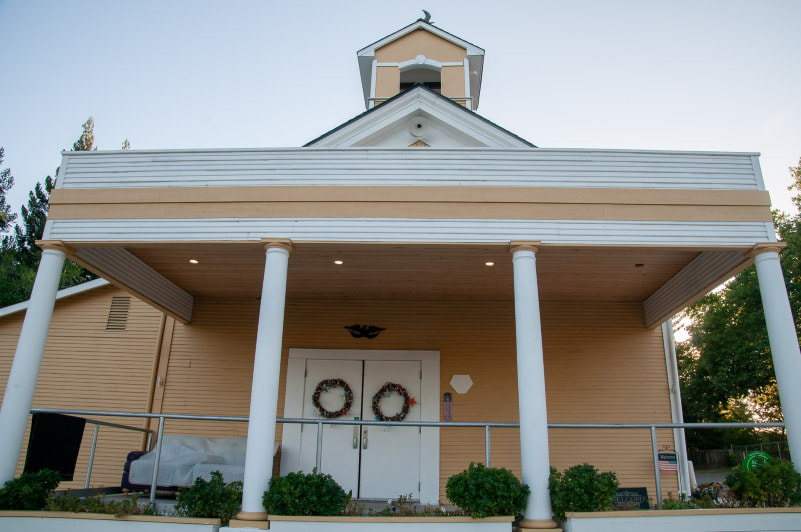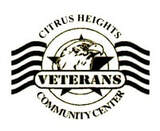|
The Citrus Heights Sentinel, our local paper, just did a story on our building! Here it is: The History of Citrus Heights' First One Room SchoolhouseJanuary 16, 2022 By Mike Hazlip-- The year was 1862, and as the Civil War was raging in the eastern United States, William Thomas, a proprietor of the 15 Mile House, gave five acres of land to build a schoolhouse on the northwest portion of Sylvan Corners in what would later become Citrus Heights. Records show the rural farmland of what was originally called Rancho San Juan had few settlers at the time. Gold Rush seekers had poured into California seeking fortune, but by the late 1850s many were raising families and working the land. As more families put down roots in the fertile soil, the need for a schoolhouse soon arose. Citrus Heights Historical Society President Larry Fritz told The Sentinel in an email that local carpenter John Cross helped build the first schoolhouse, and his wife, Sarah, served as the first teacher. Their daughter, Lilian, described the history of the school in a 1943 document titled “Sylvan Recollections.” The document recounts the early days of the school, with Cross saying her mother used a nearby cabin for a school room prior to the Sylvan schoolhouse being completed by her father, who was “assisted by some of the other men in the neighborhood.” Also on The Sentinel: The tragic story behind Sylvan Cemetery’s first grave There were about 20 students initially. The one-room schoolhouse was clapboarded and painted a light color, Cross wrote. Homemade desks were painted a blue-gray, and the desk surfaces were worn with “many a jackknife’s carved initials.” Cross described that first modest schoolhouse as a “temple of learning,” and said it became the center of activity for the area. “As was usual in farming districts, the schoolhouse was the civic, social and religious center,” Cross noted. “Here was the voting place, and where the men of the community met to talk over matters of neighborhood importance.” She also wrote that dancing parties and other events were held at the schoolhouse, noting it was “a very long time before moving pictures or the radio, and people had to furnish their own entertainment.” Related: Street names in new Citrus Heights subdivision rooted in local history While at school, children were divided into a girl’s side and a boy’s side, Cross said. “An imaginary line was drawn through the school property from north to south, dividing it into two parts, nearly equal,” she said. “The girls and boys were supposed to stay on their respective sides, but I recall no iron-clad rule requiring them to do so. The girls had the east side, along which the Roseville Road ran, and besides being the sunnier side of the schoolroom, it gave them the added advantage of seeing the occasional passerby.” Chores were also divided, according to Cross, with boys being sent to retrieve water from a nearby well, while girls used brooms furnished by the district to sweep the schoolhouse. The children were not paid for the work, and they shared long handled tin dippers to drink the water. “In the light of today that may not be a pleasant thought, but there were few illnesses among the Sylvan children, and certainly none that could be traced to those common drinking cups,” Cross said. An outhouse was also used. Also on The Sentinel: The history behind those ‘Lincoln 40’ signs in Citrus Heights Improvements to the original schoolhouse were added over the years, with pillars and a cupola added in 1903. A second building was added in the early 1920s to accommodate the growing student population, Fritz said. When a third building was added in 1927, the old schoolhouse was sold as surplus property and purchased by the Citrus Heights Community Club, which moved the building a quarter-mile south from its original location onto land owned by the Van Maren family on Sylvan Road. “I don’t know what they did to make it mobile, but a local farmer who had a tractor or a bulldozer hauled the schoolhouse to where it is now,” Fritz said. The club then operated the location for many years, with the building serving as the “center for social and civic activities.” In 2013, the property was purchased by Jim Rounsavell, who opened the old schoolhouse as a veterans center. Rounsavell died in March of 2021, but the 160-year-old schoolhouse continues to operate in service of area veterans at 6921 Sylvan Road. Like local news? Sign up for The Sentinel’s free email edition and get two emails a week with all local news and no spam, ever. (Click here) Many thanks to the Sentinel and Mike Hazlip for this great article! There are active links within this article to see more stories on the Sentinel's website too.
0 Comments
Leave a Reply. |
About VCCJames Newton Rounsavell was the Founder of Veterans Golf Park for Disabled Vets, dba Veterans Community Center. Jim was a life long golfer and began to realize that golf could help disabled vets with PTSD and TBI, two very degrading but all too common syndromes that affect our Vets. Archives
July 2024
CategoriesLinksHome
|
©Veterans Golf Park for Disabled Vets
|
Website by GAP Consulting
|



 RSS Feed
RSS Feed

